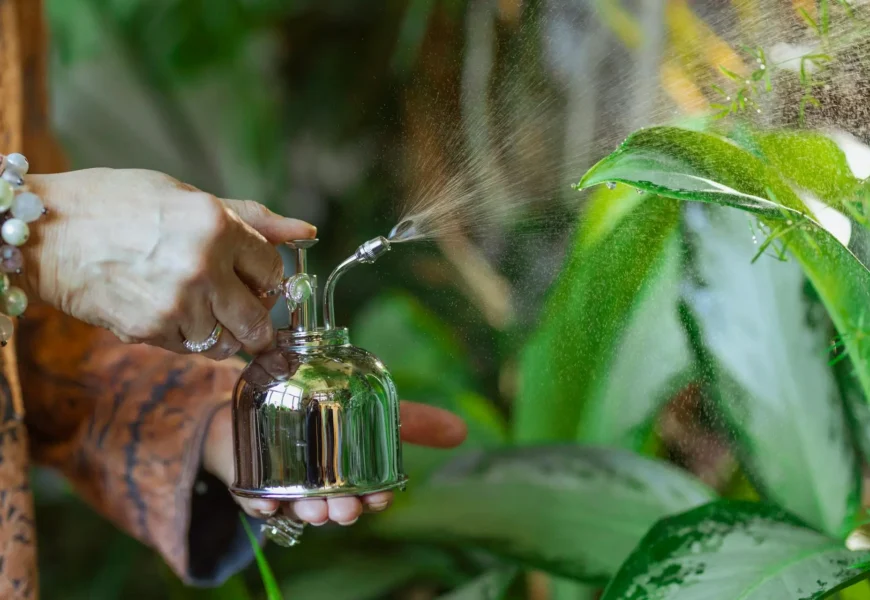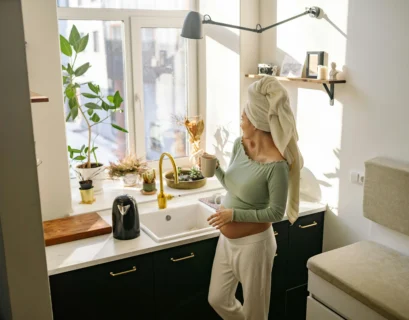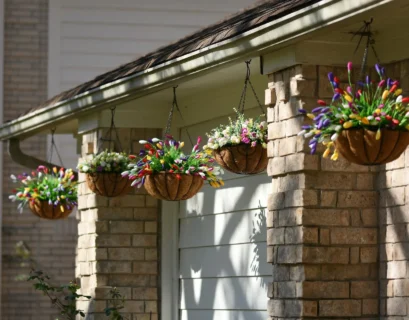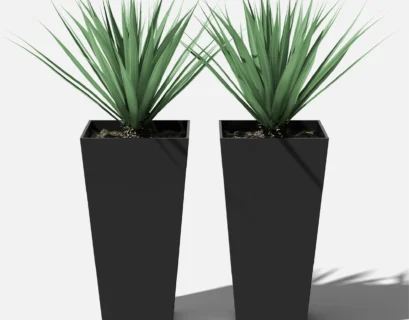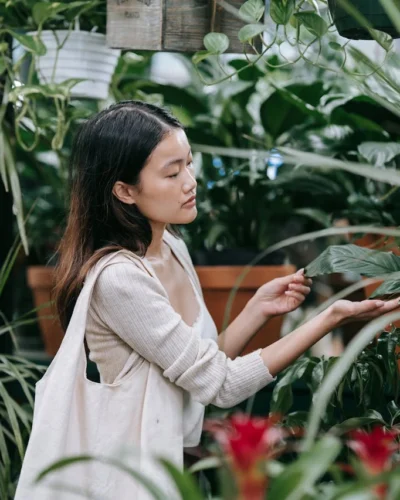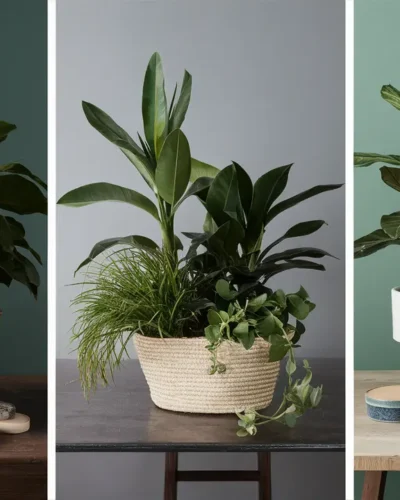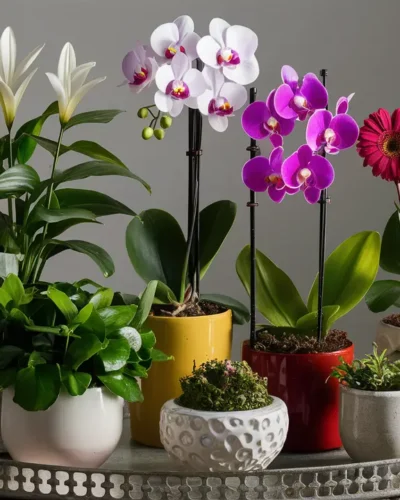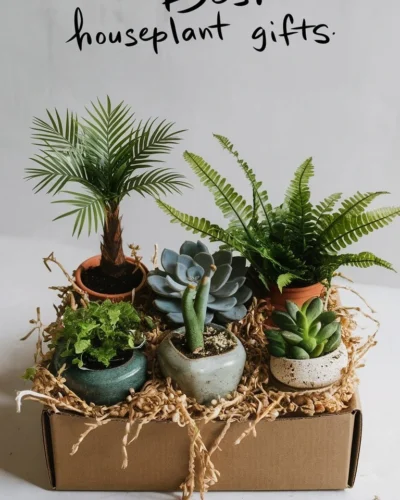If you’ve delved into indoor gardening, you may have come across self-watering planters. These innovative devices have transformed plant care by ensuring hydration with minimal effort.
Table of Content
Top 10 Mistakes to Avoid with Self-Watering Planters :
Top 10 Mistakes to Avoid with Self-Watering Planters
Before you embrace self-watering planters, it’s crucial to understand common mistakes beginners make.
1. Neglecting to Understand How They Work
Self-watering planters function based on scientific principles, not magic. To ensure your plants thrive, it is essential to understand the mechanics of these systems. Educate yourself on how self-watering planters work.

For an in-depth exploration of self-watering planter mechanisms, check out our comprehensive guide, The Ultimate Guide to Self-Watering Planters.
2. Overwatering Due to Malfunction
One of the most common mistakes novice plant parents make with self-watering planters is overwatering. It’s easy to assume that because the planter is designed to supply water to the plant automatically, you can set it and forget it.
However, malfunctions can occur, leading to a continuous flow of water that drowns your precious greens.
To avoid this catastrophe, regularly inspect your self-watering planter for any signs of malfunction, such as leaks or clogs. Additionally, be mindful of the moisture level in the soil and adjust the watering mechanism accordingly.
3. Failing to Monitor Soil Moisture
While self-watering planters take much of the guesswork out of watering, they still require regular monitoring to ensure your plants receive the appropriate amount of hydration.
It’s easy to fall into the trap of assuming that the planter will take care of everything, but neglecting to check the soil moisture levels can lead to problems down the line.
Develop the routine of checking the soil moisture by inserting your finger periodically. If it is dry, refill the reservoir. In case it is too wet, adjust the watering to avoid overwatering.
4. Ignoring Fertilizer Needs
While self-watering planters excel at providing plants with water, they don’t necessarily supply them with essential nutrients. Many beginners overlook the importance of fertilizing their plants, assuming that the planter alone will suffice.
To ensure optimal plant health, it is crucial to use a specialized indoor plant fertilizer and follow the instructions for application. The frequency of fertilization may vary depending on the plant species and environment.
For more insights into the nutritional needs of indoor plants, check out our guide on Houseplant Parenthood Made Easy: 10 Tips for Beginners to Thrive.
5. Choosing the Wrong Size Planter
When it comes to self-watering planters, size matters. Selecting a planter that is too small for your plant can lead to stunted growth and rootbound conditions, while opting for one that is too large can result in excessive moisture retention and root rot.
Before purchasing a self-watering planter, take the time to research the specific requirements of your plant species and choose a container that provides ample room for growth.
Remember to consider factors such as the plant’s mature size and root structure when making your selection.
6. Neglecting Drainage
While self-watering planters are designed to provide plants with the moisture they need, proper drainage is still essential for maintaining healthy root systems. Without adequate drainage, excess water can accumulate in the bottom of the planter, leading to waterlogged soil and root rot.
When selecting a self-watering planter, ensure that it is equipped with drainage holes or a drainage reservoir to allow excess water to escape. Additionally, consider adding a layer of gravel or perlite to the bottom of the planter to improve drainage and prevent waterlogging.
For more tips on creating the ideal growing environment for your plants, check out our guide on Thrive Indoors: The Ultimate Guide to Choosing Long-Lasting Houseplants.
7. Overlooking Plant-Specific Needs
While self-watering planters offer a convenient solution for general plant care, it’s essential to remember that different plant species have unique requirements. Some plants may thrive in self-watering environments, while others may struggle to adapt.
Before introducing a new plant to your self-watering planter, take the time to research its specific needs and ensure that they align with the capabilities of your planter. Factors to consider include light requirements, humidity levels, and temperature preferences.
For a deeper dive into understanding your plants’ individual requirements, explore our article on Top Light Plants for Busy Homes and discover which species thrive in low-light conditions, perfect for your self-watering planter setup.
8. Neglecting Maintenance
Self-watering planters may offer a hands-off approach to watering, but that doesn’t mean they’re maintenance-free. Regular upkeep is essential to ensure your planter continues to function optimally and your plants remain healthy.
Make it a habit to clean your self-watering planter periodically to prevent the buildup of algae and mineral deposits. Additionally, inspect the watering mechanism and reservoir for any signs of wear or damage, and replace any worn-out components as needed.
For more tips on keeping your self-watering planter in top condition, check out our guide on The Easy Guide to Self-Watering Houseplants.
9. Neglecting Pest Control
While self-watering planters can help prevent issues like underwatering and overwatering, they’re not immune to pest infestations. Neglecting to implement proper pest control measures can lead to problems such as spider mites, aphids, and fungus gnats.
To keep pests at bay, regularly inspect your plants for signs of infestation, such as yellowing leaves, sticky residue, or tiny insects. If you notice any suspicious activity, take swift action to address the issue, whether it’s through natural remedies or commercial pesticides.
For tips on creating a pest-resistant environment for your plants, check out our article on Pets & Plants: Happy Home Hacks for You & Your Dog.
10. Expecting Perfection from Self-Watering Planters
Finally, it’s essential to remember that no plant care regimen, no matter how advanced, can guarantee perfect results every time. Plants are living organisms, and they’re bound to experience ups and downs along the way.
Instead of striving for perfection, focus on learning and adapting as you go. Pay attention to how your plants respond to their environment and adjust your care routine accordingly. Remember that every mistake is an opportunity to learn and grow as a plant parent.
For more insights into the benefits of houseplants and how they can enhance your well-being, check out our article on How Houseplants Become Your Natural Stress Busters.
Conclusion
In conclusion, self-watering planters offer a convenient and efficient way to care for your indoor greenery, but they’re not without their challenges. By avoiding these common mistakes and staying proactive in your plant care routine, you can ensure that your leafy companions thrive and flourish for years to come.
Remember, the journey of plant parenthood is all about learning and growing together, so embrace the process and enjoy the rewards of a lush and vibrant indoor oasis.
For more expert tips and advice on all things plant-related and self-watering planters related
This article draws insights from various resources on SproutFolk, including:
- The Ultimate Guide to Self-Watering Planters
- Self-Watering Planters for Busy People (or Plant Killers!)
- Self-Watering Planters vs. Traditional Pots
- Creating a Beautiful Indoor Jungle with Self-Watering Planters
- DIY Self-Watering Planter Project
- The Science Behind Self-Watering Planters
- Self-Watering Planters for Travel Lovers
- Self-Watering Planters for Different Plant Needs
- Self-Watering Planters: Eco-Friendly or Not?

